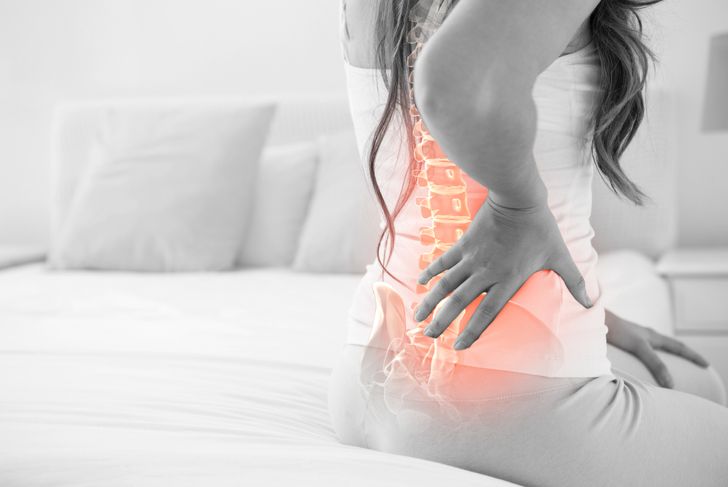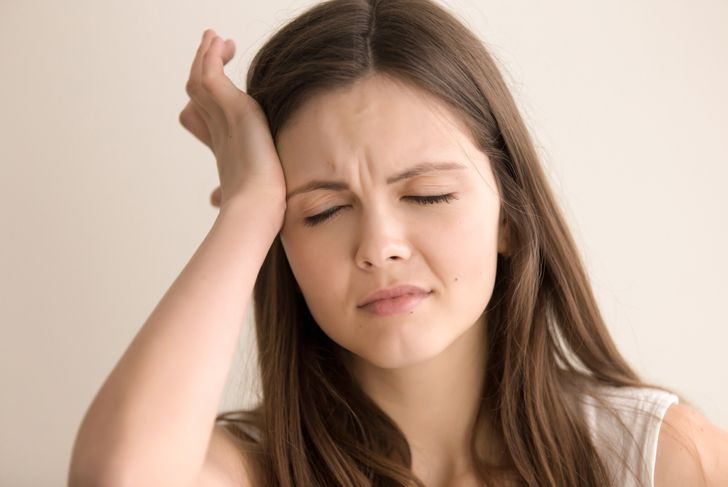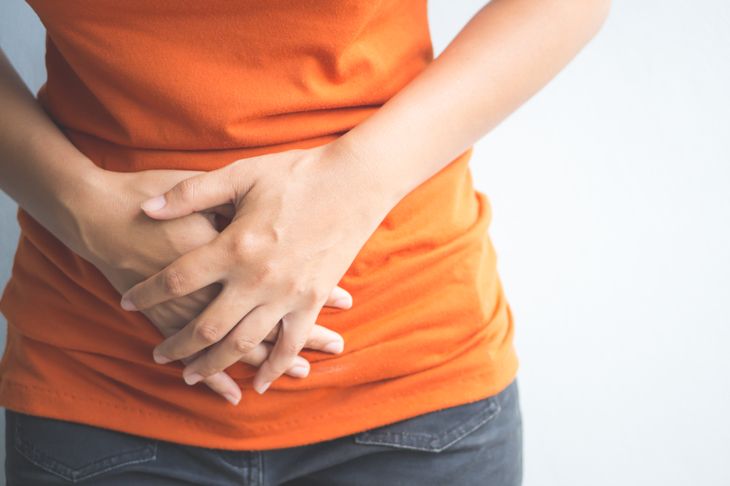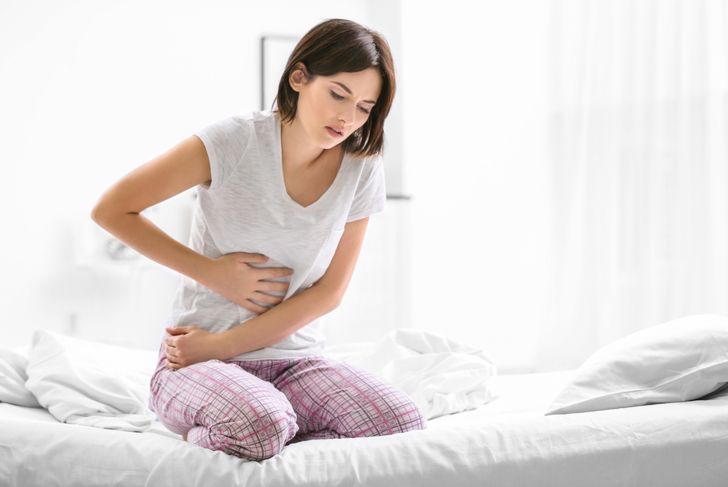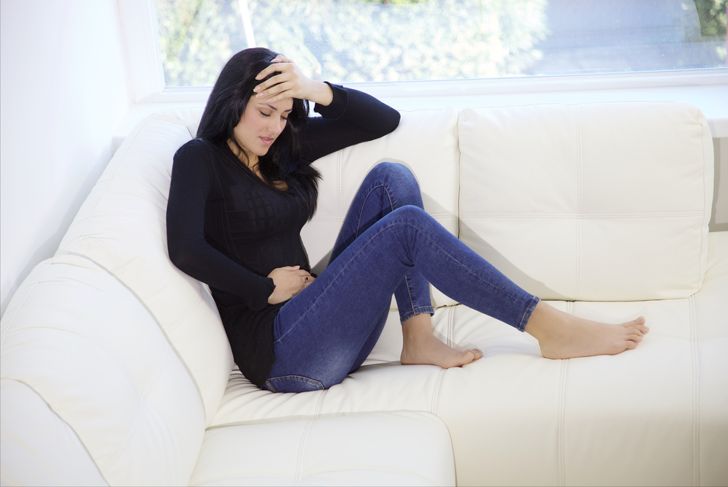Dysmenorrhea is a term which you can translate as “difficult monthly flow.” It’s quite normal for women to experience mild abdominal cramps. They usually feel this on the first and second day of their period. However, about 10% of women experience severe abdominal pain or dysmenorrhea. There are two types of dysmenorrhea. Women who experience primary dysmenorrhea don’t have to worry as much. This is because it’s just an uncommon part of the whole menstrual process. Fortunately, as women grow older, the primary dysmenorrhea eases, especially after pregnancy. Although painful, it’s mostly harmless. On the other hand, secondary dysmenorrhea is more serious. It’s usually a symptom of an underlying gynecologic disorder. If you experience this, have yourself checked.
Abdominal pain
Abdominal pain is the most common symptom of dysmenorrhea. This is usually a pain in your belly. Sometimes it’s mild, and sometimes it’s severe. You may either feel pressure in the area or a dull, throbbing sensation. As time goes by, the pain may even spread to the other parts of your body.The best way to relieve this symptom is to apply heat to the area. You can use a hot water bottle or a heating pad to do the job. You may even use a self-heating patch if you have one on hand. Simply apply the heat source to your lower abdomen and keep it there for some time. This will reduce the pain significantly.
Radiating pain
As you feel pain in your lower abdomen, you may also start to feel it radiate to other parts of your body. These include your lower back, your hips, or even your thighs. Such pain may be congestive or spasmodic. The former feels like sharp cramps while the latter feels like a dull and deep ache.Aside from applying heat, you can also do things to prevent the pain from occurring. You can exercise regularly to reduce the symptoms of dysmenorrhea. Even before your period starts, try exercising. See how the activity affects your body positively.
Nausea and vomiting
These are also symptoms of dysmenorrhea. When you’re feeling pain in the different parts of your body, you may also start feeling nauseated. This can be because of different factors and symptoms which come with the condition. You may also experience an upset stomach which has nothing to do with what you’ve eaten.Sometimes, you might even start vomiting. When you experience these symptoms, it’s best to lie down and rest. Stay off your feet until the feelings go away. If you can’t take it any longer, you may go for some medications to ease your stomach or your queasiness.
Lightheadedness and overall achiness
You may also start feeling dizzy or lightheaded. If it gets worse, you might start feeling like you’re about to faint. Again, when you’re feeling this way, lie down and take a rest. These symptoms aren’t serious, but they can get worse if you don’t deal with them.Aside from feeling lightheaded, you may have an overall achy feeling. In more severe cases of dysmenorrhea, the pain spreads to your entire body. Unfortunately, there’s not much you can do about it. Try taking some anti-pain medication to ease the pain. You can also take a nap if you think it will help.
Bloated feeling
Feeling bloated is also common in dysmenorrhea. The main area of your body which experiences discomfort is your abdomen. One reason could be that it’s bloated or at least, you feel like it is. This isn’t a permanent feeling; it will go away after some time.To ease this feeling, you should avoid foods and beverages which contain caffeine. When you’re feeling bloated, avoid drinking alcoholic beverages and smoking. You can also prevent this from happening. The best thing to do is to eat light, healthy meals regularly.
Headache
Women suffering from dysmenorrhea may also experience headaches. This is another common symptom which comes with the condition. You will usually feel this at the beginning of your period and right after it. In worse cases, the headache may even turn into a migraine.The best treatment for a headache or a migraine is to take a pain reliever. There are other treatments for migraines, especially when they happen frequently. After taking pain medication, sleep it off, so you don’t have to endure it.
Dull and consistent ache
You may also feel a dull and consistent ache in your lower abdomen or other parts of your body. This pain may be intense in the beginning; then it dulls into a cramping or throbbing pain. Usually, you’ll feel the pain right before your period starts. Then, as the days go by, it becomes less and less. Another common kind of pain felt in dysmenorrhea is back pain.If you’re feeling such pain, you can do some things to alleviate it. You can lie on your back, bend your knees, and support them with a pillow. Lay like this until the pain goes away or until you’re more comfortable. You can also take a warm bath to help reduce all the symptoms of dysmenorrhea that you’re feeling.
Bowel issues
Sometimes this condition comes with bowel issues. You may either experience diarrhea or constipation. In cases like these, you may have to take medications. The medications either loosen your bowels or stop them from coming out so frequently. You may also try to drink herbal teas. These will soothe your body and hopefully help with your bowel movement.Aside from bowel issues, some women also feel like they need to urinate frequently. If you’re feeling this symptom, just keep emptying your bladder when you get the urge. But, you should also keep drinking water to stay hydrated.
Irritability
Another noticeable symptom of dysmenorrhea is feeling very irritable. Because you’re feeling a lot of discomfort and pain, it’s only normal to feel irritable. Just try not to take it out on the people around you. If you’re feeling overwhelmed at this time, take a break from things. Relax until your mood improves.Don’t just stay away from stressful situations, try to distract yourself too. You can do some light exercises like biking, walking or stretching. These will help with your blood circulation which will then ease your pelvic pain.
Severe bleeding
In the worse cases, you may start experiencing severe bleeding from your vagina. You’ll notice this immediately especially if you’re observant of your regular menstrual discharge. You may be bleeding too much or passing blood clots from your vagina. When this happens, it may be more than just dysmenorrhea. Have yourself checked immediately.

 Home
Home Health
Health Diet & Nutrition
Diet & Nutrition Living Well
Living Well More
More
